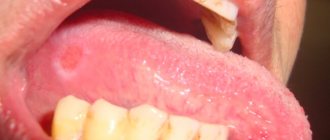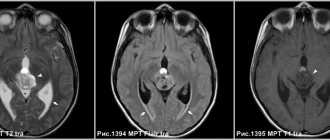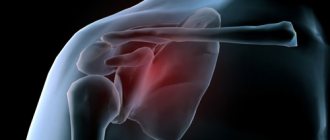Periostitis of the jaw (flux) refers to dental diseases. The localization of the source of inflammation occurs in the periosteum. A subperiosteal abscess is formed, and the peri-maxillary soft tissues swell. A person experiences painful sensations radiating to the temporal region, ear, eye; his health worsens: weakness, sleep disturbances, fever, and headaches occur.
Periostitis, aka gumboil
The disease is diagnosed by inspection and palpation; an x-ray is required for confirmation. The doctor opens and drains the subperiosteal abscess and removes the tooth that is the source of infection. After this, the patient must undergo a course of physiotherapy and antibiotic treatment. It is also necessary to rinse your mouth regularly.
What kind of diagnosis is this? According to the international classification ICD-10, accepted throughout the world, periostitis of the lower jaw is assigned code K10.2.
Reasons for the development of periostitis
The causes of periostitis of the jaw are usually infection or injury. According to statistics, in practice this disease is observed in 5.4% of patients with inflammation in the face and jaw. Moreover, 95% of patients have an acute form, 5% have a chronic form. Localization of periostitis is observed one and a half to two times more often in the lower jaw. The clinical picture, both local and general, is peculiar. If the treatment process is started on time, it will end successfully, otherwise the disease progresses, which carries a high probability of severe purulent complications.
Why does this disease occur? There are several reasons. And the main one is complicated caries, in which pathogenic microflora penetrate through microchannels into the tooth cavity and then spread to the tissue surrounding the root.
Often periostitis is caused by chronic apical periodontitis. Diseased microorganisms move further and further through the channels over time. If the disease is not treated, the soft tissues are first affected, then the periosteum.
Staphylococcus always lives in the oral cavity. If the immune system is weakened, the population begins to grow and the periosteum becomes inflamed.
The hematogenous and lymphogenous form is usually caused by ENT diseases, ARVI, and infectious diseases such as measles and scarlet fever. Traumatic periostitis may occur after tooth extraction or trauma, surgical intervention, jaw fractures, infected wounds on the face, etc.
In many patients, periostitis is caused by previous hypothermia or overheating, as well as emotional or physical overload.
There are other reasons, less common: tuberculosis and other diseases that are fraught with complications spreading to the jaw periosteum.
The etiology and pathogenesis of periostitis in modern dentistry has been studied quite well. Treatment usually does not cause problems.
Periostitis of the jaw - symptoms and treatment
Treatment of periostitis is always surgical; if you deviate from this rule, there is a serious danger of a limited focus of inflammation flowing into a more dangerous - diffuse form, which will require different treatment tactics and often hospitalization of the patient.
Treatment of periostitis is standard and consists of eliminating the source of primary inflammation and evacuation of pus, i.e., removing the causative tooth (in cases of unfavorable treatment prognosis) and surgically opening the site to its entire width, followed by drainage.
The procedure is usually performed under local anesthesia; in some cases, drug sedation is indicated; anesthesia is also possible. You need to understand that the introduction of an anesthetic into tissues strained by exudate (fluid accumulation) is an extremely painful procedure, therefore, the method of pain relief before periostotomy (opening an abscess) has its own specifics: conduction anesthesia is preferable (a type of anesthesia when the nerve is blocked to the operation site) followed by local anesthesia performed superficially with a thin needle, without immersing the needle into the abscess.
The diseased tooth must be removed in the case of an unfavorable therapeutic prognosis: the presence of large foci of bone destruction, incorrect previously carried out treatment of the canals, resulting in their perforation or blockage by a fragment of an instrument, etc. In cases of a favorable prognosis, endodontic treatment is carried out, which involves the removal of pulp decay from the canals, appropriate mechanical and medicinal treatment of the canals with a special instrument and powerful antiseptics to eliminate infection in them, followed by temporary filling with calcium preparations and temporary filling of the tooth. Subsequent X-ray monitoring is very important in order to confirm the effect of the canal therapy: the focus of destruction in the bone should decrease and subsequently disappear.
To evacuate pus, periostotomy is performed (dissection of the mucosa and periosteum) along the entire length of the infiltrate along the transitional fold.
As a rule, the surgeon detects a characteristic symptom - detachment of the periosteum from the bone, whereas in a healthy state the periosteum is firmly attached to the cortex. At this stage, the abscess is emptied, or the absence of pus is detected along with the periosteal reaction. The surgeon uses a blunt instrument to probe the entire abscess cavity to identify isolated lesions. In the case of the presence of pus, irrigation (washing) of the subperiosteal space with antiseptics is usually carried out, followed by the introduction of drainage (usually a strip of glove rubber) into the wound to prevent its edges from sticking together. The wound is not sutured; the patient is given a dressing after a day or two to remove the drainage [8].
In the absence of contraindications, antibacterial therapy (in most cases, semisynthetic penicillins) and NSAIDs (nonsteroidal anti-inflammatory drugs) are prescribed. In case of severe edema, desensitizing drugs are prescribed. It is also necessary to prescribe analgesics or their direct intramuscular administration after surgery, since in the first hours after treatment, when the effect of the anesthetic wears off, severe pain symptoms appear. It also makes sense to locally cool the infiltrated area with ice for several hours to reduce bleeding and swelling. The cooling time must be assigned based on the patient’s subjective feelings, and not on specific time periods.
Almost always, this treatment leads to a positive result: within a few hours the patient experiences relief, decreased pain and swelling. Although the infiltrate in the form of a moderately painful compaction will persist for several days.
A follow-up visit the next day is necessary to confirm the results of the treatment and possible removal of the drain if there is no discharge from the wound. Subsequently, the patient is observed by a doctor for 3-5 days; it is quite legal to issue a certificate of incapacity for work for this period. After the pronounced symptoms of inflammation disappear, they begin to continue treatment of the causative tooth.
In rare cases, for example, when the incision is of insufficient length or when the drainage falls out and the edges of the wound stick together, treatment may be complicated due to a delay in the evacuation of residual pus from the lesion. In these cases, the incision should be widened and drainage should be ensured by introducing drainage.
Types and stages of disease development
The classification of odontogenic periostitis depends on the phase of the disease and the nature of its course. In addition to examination and palpation, the dentist prescribes an X-ray examination. The resulting image allows you to assess the condition of the roots and periapical areas. The image does not show thickening of the periosteum in the first three days from the onset of the disease.
- Various types of periostitis are classified according to the international classification ICD 10 depending on the route of infection into the periosteal tissue:
- acute odontogenic periostitis of the jaws (cause - diseased tooth);
- hematogenous (infection enters through the blood);
- lymphogenous (spread through the lymph system);
- traumatic (for injuries of the periosteum).
According to the course and pathomorphology, the disease is divided into two forms: acute and chronic.
In the acute form, the symptoms are pronounced. There is swelling of half the face, he is tormented by severe throbbing pain, and pus forms. The acute serous form is characterized by such clinical manifestations as infiltration in the periosteum, serous exudate is formed in the lesion. In acute purulent periostitis of the jaw (popularly called gumboil), a limited subperiosteal focus of inflammation is formed, fistulous tracts are formed, and pus comes out through them. The course of purulent periostitis is much more severe, with bursting pain that increases when drinking hot foods. If a fistula tract does not form, the dentist cuts the periosteum to allow the pus to escape.
The course of the chronic process is sluggish, stages of exacerbation occur periodically. Young bone tissue begins to grow on the surface of the jaw. With the development of the ossifying form, ossification and hyperostosis occur quite quickly. There are two degrees of spread of this process: limited (covering one to three teeth) and diffuse purulent (almost the entire jaw is covered).
If the wisdom tooth erupts with difficulty, retromolar periostitis may develop in the lower jaw. The pus does not come out on its own due to anatomical features, which requires dissection.
Therapy and rehabilitation
Treatment of the disease is carried out by two methods - conservative and surgical. The choice of method depends on the form of the disease, its severity, and the course of the disease. In the early stages of development of the pathological process, conservative treatment is possible by prescribing a complex of drugs:
- broad spectrum antibiotics
- anti-inflammatory;
- painkillers;
- antipyretic.
IMPORTANT! Conservative treatment requires careful compliance with all doctor’s instructions until the process is completely eliminated. Otherwise, there is a risk of the disease becoming chronic.
Purulent periostitis is treated by wide opening of the purulent sac with dissection of the periosteum to the bone. At the same time, the issue of treating the tooth that caused the inflammatory process is being resolved. Most often, such a tooth is removed. After removing the pus, medications are prescribed, including antibiotics, anti-inflammatory and painkillers. Additionally, physical therapy may be prescribed: UHF, microwaves. The patient is recommended to frequently rinse the mouth with a solution of baking soda or sage tincture.
Simple periostitis requires complete rest of the injured area and treatment with physiotherapeutic procedures. All other types are reduced to treating the underlying disease or eliminating the focus of fibrous tissue growth.
IMPORTANT! Under no circumstances should you treat flux yourself. It is especially not recommended to pierce a purulent sac: there is a high risk of infection in neighboring tissues.
To speed up the treatment and recovery processes, you can resort to traditional medicine methods.
Characteristic symptoms
Symptoms of acute periostitis of the jaw are determined by the form of the disease. The state of the patient’s immune system and the diseases he has are also influenced. But there are also characteristic signs that make it possible to make an accurate diagnosis.
The disease develops gradually. At first, the gums swell a little, and pressing on the tooth causes pain. Having discovered such signs, the patient should visit a doctor on the same day, otherwise the cheek may become swollen by the morning.
Signs of the form of the disease with serous infiltrate are:
- red color of the mucous membrane:
- the appearance of painful swelling in the fold between the gum and cheek;
- tolerable pain;
- temperature may rise to 37°C;
- facial asymmetry;
- submandibular and postauricular lymph nodes enlarge (lymphadenitis).
With a purulent infection, the condition becomes much worse:
- signs of intoxication and pain are observed;
- temperature (up to 38°C);
- the cheek becomes swollen;
- pain radiates along the trigeminal nerve;
- pulsation is felt in the swollen part;
- a fistula may occur;
- When you press in the area between the cheek and gum, you can feel the vibrations of the fluid.
Clinical picture
The main symptom for all types of flux is severe toothache at the site of infection, sometimes diffuse (with extensive bone damage). Swelling gradually begins to increase: first it is localized above the site of inflammation, and then along the surrounding tissues, sometimes affecting the neck, temple and eye.
Important! Sometimes flux occurs painlessly or with a mild pain effect, which, as a rule, indicates the development of a chronic form with sluggish inflammation and periodic relapses.
Inflammation is accompanied by the following symptoms:
- pulsation at the site of the lesion;
- increase in body temperature to subfebrile and febrile levels;
- headache;
- enlarged lymph nodes on the affected side;
- weakness, lethargy, lack of appetite;
- pain when swallowing, talking, opening the mouth;
- pain when pressing on the gum;
- redness of the oral mucosa at the site of the lesion.
How is periostitis diagnosed?
For an accurate diagnosis, the doctor collects anamnesis, conducts an external and internal examination, prescribes an x-ray and examines the x-ray. Since the symptoms of some dental problems are identical, the surgeon must have a good understanding of their symptoms.
When conducting diagnostics, doctors look for similarities and differences between chronic periostitis of the jaw or acute and other diseases of the oral cavity. An x-ray helps differentiate the disease from others (apical periodontitis, phlegmon, abscess, inflammation of the salivary gland, osteomyelitis).
Apical periodontitis is characterized by the presence of a purulent focus located at the top of the root.
Cellulitis and abscess are manifested by external changes on the skin. An infiltrate appears on the affected area, the skin over it turns red and becomes shiny.
With sialadenitis, it is necessary to palpate the salivary gland to determine its density. Osteomyelitis is diagnosed by X-ray - in the early stage of the disease, it shows decaying bones, in the late stage - formed sequesters.
Types of periostitis
The ICD-10 (tenth revision) classification of diseases developed by the World Health Organization, as amended, identifies three main types of periostitis: acute, chronic and purulent in accordance with classifier code K10.2 (inflammatory diseases of the jaws)4.
Acute periostitis is the most common type of periostitis and, as a rule, is an “accompanying” disease during exacerbation of chronic periodontitis. A rapidly developing inflammatory process causes the accumulation of odontogenic contents at the tooth root, as a result - swelling of the soft tissues and loosening of the periosteum, the inner layer of which melts, which causes detachment of the periosteum, disrupts the blood supply in it and causes deep degenerative changes in the bone tissue.
Purulent periostitis is characterized by the transition of serous contents in the inflammatory focus into serous-purulent, and then into purulent exudate. An abscess occurs, followed by a breakthrough of purulent masses under the mucous membrane of the gums or through the fistulous tract to the outside.
Chronic periostitis always means that in the patient’s body there remains a focus of long-term sensabilization - increased sensitivity to infectious stimuli, for example, in the presence of a diseased tooth that has not been treated in the acute stage of periostitis, or in chronic sinusitis, etc. A long course of chronic periostitis can lead to ossification - proliferation of bone tissue. At even longer periods, a “bulbous pattern” of the periosteum is observed (vertical dissection and layering)3.
Stages of the operation
When treating periostitis of the jaw, the surgeon must cleanse the cavity of pus so that the process does not spread deeper. To do this, he cuts the periosteum. The operation consists of several stages:
- Anesthesia . The affected area is numbed using modern drugs.
- Periostotomy . The surgeon makes a soft tissue incision along the fold between the gum and cheek, capturing the periosteum. This ensures the release of purulent exudate to improve the patient’s condition.
- Wound drainage . A rubber or gauze graduate is installed into the incision. This ensures the drainage of pus.
After opening the purulent lesion, the surgeon asks the patient to rinse his mouth with a disinfectant solution.
After this, chlorhexidine and similar solutions are used to wash the wound. Measures such as irrigation with dimexide with oxacillin and 15-minute applications of dimexide liniment are also effective.
After examining an x-ray of the tooth that caused periostitis, the doctor decides whether it can be preserved and treated in the future to eliminate the source of infection, or whether tooth extraction is necessary.
Treatment methods
In folk medicine, there is an opinion that a lump on the gum, i.e. flux, needs to be treated with hot compresses. However, this is strictly prohibited, especially in the presence of purulent inflammation, since when heated, the pus very quickly spreads along with the bloodstream throughout the body, which is fraught with inflammation of absolutely any organs, incl. brain. When treating flux, it is necessary to open the lump and install drainage for the outflow of pus, and prescribe drug therapy. The entire process of complete rehabilitation may take several weeks.
Opening a purulent abscess Treatment of flux is carried out as follows: a small incision is made on the gum, where drainage is installed - a thin tube that connects the oral cavity and the purulent focus. An outflow of pus occurs through it for some time, and at the same time a course of antibiotic therapy is prescribed. Canal treatment is also carried out, and after complete healing, the shape and functionality of the tooth is restored.
Price:
4000 rubles more details about the solution
Treatment of dental canals Periostitis, as a rule, occurs due to the presence of inflammation inside the tooth or in the periodontal tissues. Therefore, root canal treatment may be required for complete rehabilitation. To do this, the cavity is opened, thoroughly cleaned of inflammation, and if necessary, a drug is placed inside the root system to affect the periodontal tissues, i.e. to the site of inflammation. After which the canals are filled and the coronal part is restored.
Price:
from 4,500 rubles more about the solution
Tooth extraction Extraction may be required in the presence of an advanced disease, when neither opening the abscess nor drug therapy will help to fully restore the tissue and save the tooth. It is removed, the hole is thoroughly sanitized and the purulent focus is removed. At the same time, medications are prescribed to reduce the inflammatory process and quickly rehabilitate the body.
Price:
from 1500 rubles more about the solution
Surgical intervention
With serous inflammation, as a rule, conservative therapy is limited. Pulpitis or periodontitis is treated, the patient is prescribed a course of physiotherapeutic sessions (UHF), rinsing with disinfectants. This leads to resorption of the infiltrate.
The acute purulent form requires surgical intervention to open the subperiosteal or submucosal abscess.
The milk tooth that caused periostitis must be removed. Severely damaged permanent teeth are also removed. Teeth that are capable of performing their functions need to be treated.
Treatment of periostitis with physical factors
The complex approach to the treatment of periostitis is complemented by the use of therapeutic physical factors:
- ultra-high-frequency therapy (an electromagnetic field, or UHF, acts as a therapeutic factor in inflammatory processes);
- magnetic applicators (magnetotherapeutic treatment of inflammatory processes);
- medicinal electrophoresis (using an electric current of low voltage and low strength, a medicinal substance is introduced into the body as an additional therapeutic factor);
- helium-neon laser rays (have anti-inflammatory, bactericidal, regenerative effects).
Drug treatment
The second stage of treatment after surgery is drug therapy. The patient is washed with modern antiseptic compounds (Chlorhexidine, Ethacridine, Dimexide with Oxacillin), and sterile bandages are applied. To impregnate them, use a disinfectant solution or ointment. Antibiotics (Oletetrin, Oxacillin, Lincomycin) must be prescribed to prevent complications and relapses. Nitrofurans (Furadonin), sulfonamides, painkillers, antihistamines (Suprastin) may be prescribed; vitamins. In the period after the operation, the patient must follow a gentle diet and rinse with antiseptics.
Features of the treatment of acute purulent periostitis
In the case of acute purulent periostitis, the patient is required to be prescribed painkillers, antibiotics and physiotherapy. In addition, the dentist makes an incision in the gum, removes all pus and installs drainage, for which the tip of a rubber strip is inserted into the cavity located at the site of the incision. This prevents the wound from healing very quickly and allows the fluid formed at the site of inflammation to flow out of it for some time without accumulating.
Acute periostitis is usually provoked by a diseased tooth, which must be removed if its crown is severely damaged or there is obstruction of the root canals. In addition, the tooth that is the source of infection is removed if it has become mobile, if its functionality has been lost, or if the conservative treatment method has proven ineffective.
If acute periostitis is caused by inflammation of the tonsils or throat, then it is necessary to eliminate the causes that caused the development of the infection and restore immunity. The most effective approach to treating this form of periostitis is complex, combining surgical treatment, physiotherapy and drug therapy.
Physiotherapy
After surgery, the patient is recommended to undergo a course of physiotherapy to stop the inflammatory process, solux lamp, ultrasound. These are procedures such as: UHF, fluctuarization, microwave, laser, electrophoresis. Usually 5 to 7 sessions are prescribed.
Is it possible to do without it? Such a serious disease as periostitis of the jaw cannot be cured at home; qualified professional help is needed from a professional who will eliminate the source of infection. You can use folk remedies only in cases where the pain comes on suddenly, and you need to somehow improve the patient’s condition. But you need to visit a doctor as soon as possible. Before this, you can rinse your mouth with soda, salt, a decoction of herbs that have an anti-inflammatory effect, apply cold compresses to reduce swelling and relieve pain.
Symptoms of the disease
Signs of pathology largely depend on the individual characteristics of the patient’s body, however, there are general symptoms that indicate the appearance of gumboil:
- a lump on the mucous membrane, which has different sizes - up to several cm in diameter and even in height,
- formation of an abscess and fistula if there is purulent inflammation,
- sharp pain that can radiate to the ear, eyes or temples,
- swelling of the gums and parts of the face,
- enlarged lymph nodes in the neck and under the jaw,
- fever up to 38 degrees, general weakness and poor health.
In some cases, a fistula opening appears on the abscess itself, through which purulent masses will enter the oral cavity. In this case, the pain becomes less pronounced, the patient’s condition improves, because there is an outflow of pus and a decrease in the inflammatory process. However, this does not mean at all that a complete cure has occurred - the pus will not be able to come out completely on its own. Drug therapy and surgical intervention are still required, i.e. specialist help.
What to do for prevention
The main preventive measure is to constantly monitor the condition of the oral cavity. Preventive measures include:
- daily hygiene of teeth and gums;
- visiting the dentist twice a year;
- use of professional hygiene procedures, removal of tartar;
- timely treatment of caries and other pathologies;
- If you have problem gums, you need to be systematically treated by a periodontist.
To prevent periosteal disease, doctors recommend having an x-ray every year.
Periostitis of the jaw often develops even in children.
If you notice swelling on the face of a child complaining of pain, immediately take him to the dental clinic. Self-medication is unacceptable! Taking some medications may disrupt the picture of the disease, which will complicate the diagnosis and may result in serious complications. Moscow metro station Zvezdnaya, Danube Avenue, 23
Prevention
Flux is easier to prevent than to treat. Prevention methods are simple and known to almost everyone. They consist of timely treatment of carious teeth, timely removal of the gum hood from wisdom teeth, the correct choice of toothbrush and toothpaste, and timely replacement of oral hygiene products. It is recommended that you visit your dentist at least twice a year and have your teeth professionally deep cleaned to remove plaque at least once a year.
IMPORTANT! Don’t forget about strengthening your immune system and giving up bad habits.
Dental flux is an unpleasant disease that requires treatment by specialists at an early stage of development. Self-medication in case of periostitis is unacceptable. With a favorable course and initial stage of development, conservative treatment is possible, but most often they resort to the surgical method.
Causes of the disease
An obligatory factor in the occurrence of the disease is the presence of infection. When there is dental disease, bacteria are always present. Cyst, periodontitis, pulpitis, periodontitis often precede the development of periostitis.
Infectious diseases of other organs are also common causes of periostitis. Lymphogenous and hematogenous infection is typical for children. Tonsillitis, otitis media, boils, and viral infectious diseases can cause damage to the periosteum of the jaw. This course of events often occurs in immunocompromised individuals.
The development of the infectious process can be facilitated by hypothermia, exposure to elevated temperatures, stress, and increased physical activity. These factors create favorable conditions for the development of infection.
Any injury that involves damage to the soft tissues and bone of the jaw can lead to periodontitis. Such wounds are always initially infected, so optimal conditions are created for the development of periostitis.
Inflammation of the periosteum
Dentistry defines odontogenic periostitis as acute inflammation of the periosteum of the alveolar process of the upper jaw or the alveolar part of the lower jaw. The disease is of odontogenic origin, that is, it is caused by a diseased tooth. As a rule, periostitis is a complication of untreated periodontitis. Less commonly, the infection enters the jaws through blood vessels from other areas of inflammation. Odontogenic periostitis has unpleasant symptoms (one of them is severe toothache), the elimination of which requires surgical treatment.
Usually the disease begins in the inner or outer layer of the periosteum, but due to the close connection between it and the jaw bone, the inflammatory process easily passes from one tissue to another, causing osteoperiostitis. There are acute periostitis, which in turn is divided into serous, purulent and chronic. The inflammatory process can be either limited or diffuse purulent, when the inflammation spreads to the body of the jaw.
Fibrous periostitis
It develops gradually and is chronic. It occurs under the influence of irritations lasting for years and is manifested by a callous fibrous thickening of the periosteum, tightly fused to the bone. is observed on the tibia in cases of chronic leg ulcers, bone necrosis, chronic inflammation of the joints, etc. Significant development of fibrous tissue can lead to superficial bone destruction. In some cases, with a long duration of the process, new bone formation is observed. After eliminating the stimulus, a reverse development of the process is usually observed.
Diagnostics
Only an experienced dentist can accurately determine the form of the disease and prescribe competent treatment after a comprehensive examination.
1. Visual inspection.
The dentist will examine the oral cavity, paying special attention to severely damaged teeth.
2. X-ray of the jaw.
In order to differentiate periostitis from pathologies with similar symptoms (for example, from a dental cyst or acute periodontitis), the doctor may prescribe an X-ray examination.
X-ray allows not only to accurately diagnose periostitis, but also to determine the boundaries of the source of inflammation.
3. General blood test.
If purulent periostitis is suspected, a general blood test is required. An increase in leukocytes and ESR values confirms the purulent form of periostitis.
Chronic periostitis
This form of periostitis is less common than others. Chronic periostitis most often develops in the periosteum of the lower jaw and is characterized by a local inflammatory reaction in the form of dense edema, which does not significantly change facial features. At the site of inflammation, the bone thickens and the lymph nodes enlarge. At the same time, the oral mucosa may become swollen and red. Chronic periostitis does not go away for a long time and can develop over 4–8 months, and sometimes several years, making itself felt with periodic exacerbations.
Symptoms
Inflammation of the periosteum of the tooth may be indicated by such signs as:
- formation of an abscess (abscess);
- swelling of the soft tissues of the cheek;
- enlargement and redness of the gums;
- painful, limited mouth opening;
- pathological mobility of the diseased tooth;
- unbearable pain when exposed to the source of inflammation;
- high temperature (37-38 °C);
- facial asymmetry;
- chills and lethargy due to general intoxication of the body;
- inflammation of the lymph nodes.
Symptoms of acute inflammation may subside for a while, but if left untreated, the disease progresses to the chronic stage, which is dangerous with serious complications.
| Have you noticed signs of gumboil? Contact our dental clinic as soon as possible to immediately undergo an examination and begin treatment for periostitis! |










